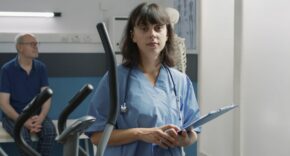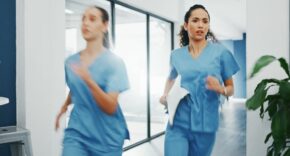
After 50, the biggest cognitive gains come from regular movement that also trains decision-making, coordination, and strength for everyday independence.
This guide turns research into clear weekly minutes, step targets, and class templates you can plug into existing programmes with minimal paperwork.
It supports primary care teams, rehab therapists, Active Ageing Centre managers, and community sports coordinators designing safe options for adults 50 and older.
You will see step-count bands, open-skill and dual-task formats led by table tennis, plus strength, tai chi, dance, and exergaming ideas aligned with tools such as Healthy 365.
Cognitive Health After 50: Protect The Skills That Matter Most
Cognitive health here means keeping executive function, memory, processing speed, and visuospatial skills strong enough for daily tasks like budgeting, shopping, and travel.
Regular moderate exercise lowers dementia risk, and guidelines advise at least 150 minutes per week of moderate activity for older adults.
In the rest of this guide, executive function refers to that control system, open-skill sport means reacting to an unpredictable opponent or ball, and dual-tasking means thinking while moving, such as stepping while naming supermarket items.
Movement Targets: Use Specific Activity Levels To Protect The Brain
WHO 2020 guidelines advise adults over 65 to do at least 150 minutes of moderate aerobic activity each week, plus strength and balance work to support brain health.
Start deconditioned groups near 3,000 steps per day, then add 500 to 1,000 steps every week or two until most reach 5,000 to 7,500 steps at a pace where they breathe faster but can still talk.
Open-Skill Activities: Train Executive Control Better Than Closed-Skill Work
Compared with closed-skill exercise like treadmill walking, open-skill activities such as table tennis or badminton are linked with better inhibition and mental flexibility in older adults.
For executive control, schedule open-skill and dual-task sessions regularly, using closed-skill modes mainly for early conditioning or frailer clients. When you rely on closed-skill exercise, add simple thinking drills, such as naming animals or foods while walking, to raise cognitive load safely.
Table Tennis For Seniors: Get The Highest Cognitive Return Per Minute
Table tennis makes players track a fast ball, predict its path, coordinate precise strokes, and interact socially, so every rally trains both movement and rapid decisions. Small controlled trials in older and clinical populations report improvements in cognition and motor function with table tennis compared with non-active or stretching controls, although larger studies are still needed.
Run a 60‑minute session twice weekly, starting with a short dynamic warm-up, then cooperative rallies with larger or foam balls, simple placement games where players call out targets, brief matches to seven points, and a cool-down.
Keep one coach per eight to ten participants, use barrier nets and non-slip shoes, offer seated or one‑arm options, and track attendance plus tests such as Trail Making Test Part B, 30‑second sit‑to‑stand, and rally counts to monitor safety.
For Singapore programmes, source beginner‑friendly table tennis gear from Sin Ten Sports to support 12‑week pilots and keep local logistics simple for senior centres.
Brisk Walking: Use Science-Based Step Bands
Observational data in adults aged 50 to 90 at high Alzheimer’s risk suggest that averaging roughly 3,000 to 5,000 steps per day slows cognitive decline, with additional benefit up to about 7,500 steps before gains level off.
Encourage two daily 10‑ to 15‑minute walks at a moderate effort where speech is possible but slightly breathless. For deconditioned clients, build up with 300‑ to 500‑step snacks after meals, then increase total daily steps by 500 to 1,000 every week or two until most people sit within the 5,000 to 7,500‑step band.
Resistance Training: Support Executive Function And Independence
Trials in women aged 65 to 75 show that weekly resistance training improves executive function and power more than balance and toning classes, supporting fall prevention.
Plan two strength sessions per week at a rating of perceived exertion (RPE) of six to seven, using two or three sets of eight to 12 repetitions for major movements such as squat to chair, hip hinge, row, press, and step‑ups, and stop a set if pain spikes or dizziness appears.
Tai Chi And Dance: Build Memory, Balance, And Calm
Tai chi and dance both challenge memory, attention, balance, and sequencing, and research in older adults with mild cognitive impairment shows tai chi can improve executive function, episodic memory, visuospatial skills, and overall cognition.
Long‑term dance programmes in healthy seniors also improve balance and increase hippocampal volume compared with conventional fitness training.
In practice, aim for one or two 45‑ to 60‑minute dance sessions and two or three 30‑ to 45‑minute tai chi or qigong sessions each week, teaching short, culturally relevant routines, checking recall of the final sequence, and keeping chairs nearby for support.
Weekly Plan: Use A Simple Seven-Day Template
Across the week, target about 180 to 240 active minutes: two 60‑minute table tennis sessions, two 45‑minute resistance sessions including bands, one 45‑minute tai chi session plus a short walk, one 45‑ to 60‑minute dance session, and one 20‑ to 30‑minute recovery walk, halved for deconditioned groups in the first two weeks.
Act Now And Iterate With Data
Start with a 12‑week block that includes two table tennis sessions, two strength sessions, and daily step targets within WHO minutes.
Track three key metrics – average daily steps, Trail Making Test Part B, and 30‑second sit‑to‑stand – and review them every quarter to refine funding and partnerships.
After 12 weeks, scale into mixed-ability leagues and caregiver-inclusive sessions to deepen social engagement and adherence.
Support Recovery With Quality Rest
While active movement builds cognitive reserve, quality rest remains equally important for consolidation and repair. Many adults over 50 experience sleep disruptions that limit recovery from training sessions, and poor sleep position can trigger back pain that discourages morning walks or strength work.
An electric bed for elderly individuals allows users to adjust head and leg elevation for better breathing, reduced pressure points, and easier transitions in and out of bed, supporting the recovery that makes consistent weekly activity possible. Encourage participants who report morning stiffness or interrupted sleep to explore adjustable sleep surfaces alongside their exercise routine.











